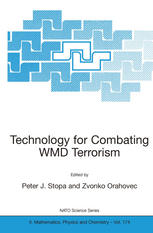

Most ebook files are in PDF format, so you can easily read them using various software such as Foxit Reader or directly on the Google Chrome browser.
Some ebook files are released by publishers in other formats such as .awz, .mobi, .epub, .fb2, etc. You may need to install specific software to read these formats on mobile/PC, such as Calibre.
Please read the tutorial at this link: https://ebookbell.com/faq
We offer FREE conversion to the popular formats you request; however, this may take some time. Therefore, right after payment, please email us, and we will try to provide the service as quickly as possible.
For some exceptional file formats or broken links (if any), please refrain from opening any disputes. Instead, email us first, and we will try to assist within a maximum of 6 hours.
EbookBell Team

5.0
28 reviewsMuch has been written on WMD terrorism, but few books present a systems approach to this problem. In this book, we present an integrated view of WMD terrorism. The threat section reviews several scenarios that a terrorist might use and a very comprehensive list of the possible biological organisms and compounds that can be used as biological, mid-spectrum, and chemical threats. In the science and technology section, the technical aspects of a successful defense against WMD agents are presented. Arguments are presented for the control of the release of scientific information to bolster CB defense. Approaches to biological agent detection and a system for ranking detection technologies are discussed next. The generic approach to biological screening and detection is then illustrated with some applications of generic detectors to water, food, and aerosol. The future of biological detection and identification is also presented, along with a call to perhaps change the paradigms that we are using. The last section of the book deals with response system planning. An example of regional cooperation is presented. Risk-based management is discussed and a practical example of this approach to emergency planning is presented. Arguments for an epidemiological reporting system are presented, while the last chapter discusses means to integrate the various components of a response system via a software tool.